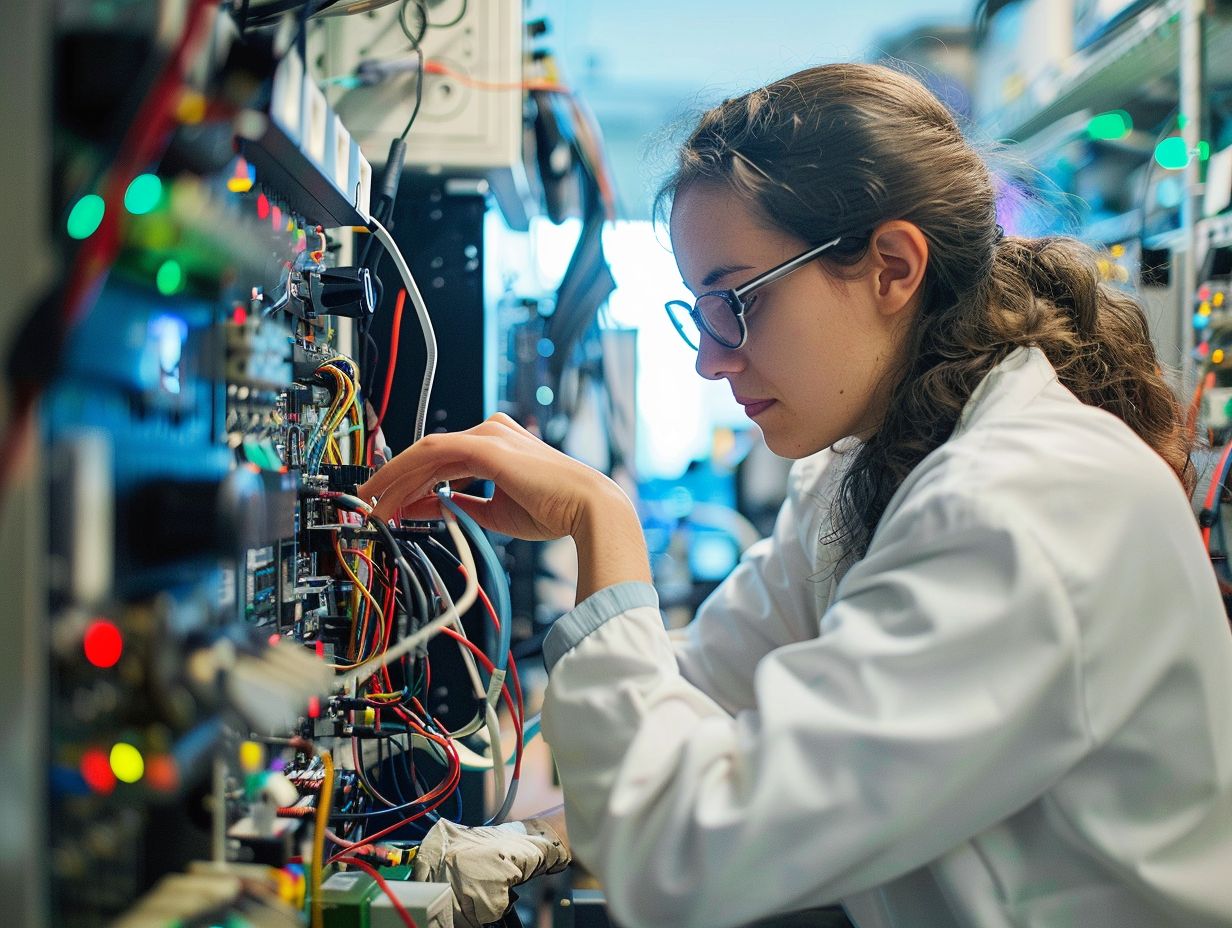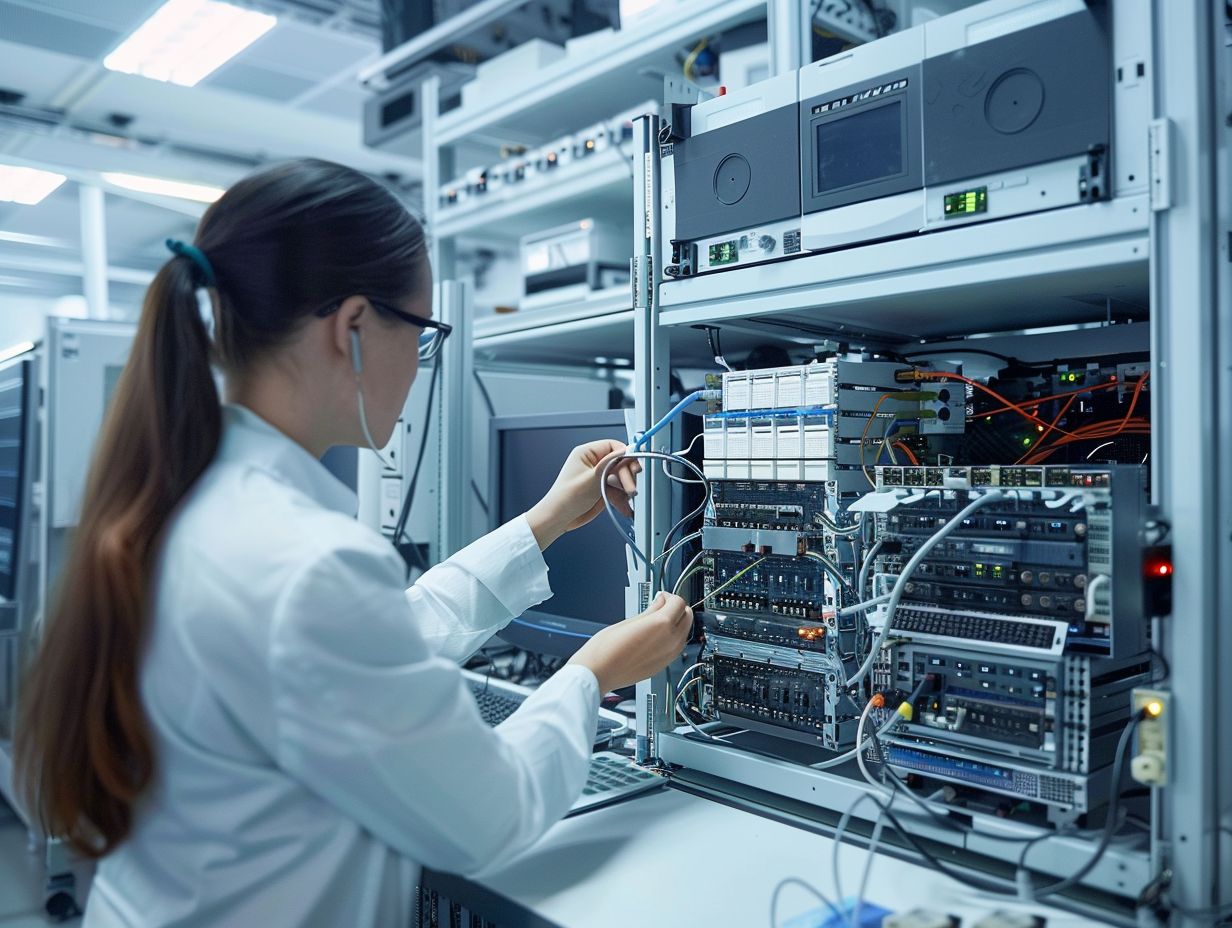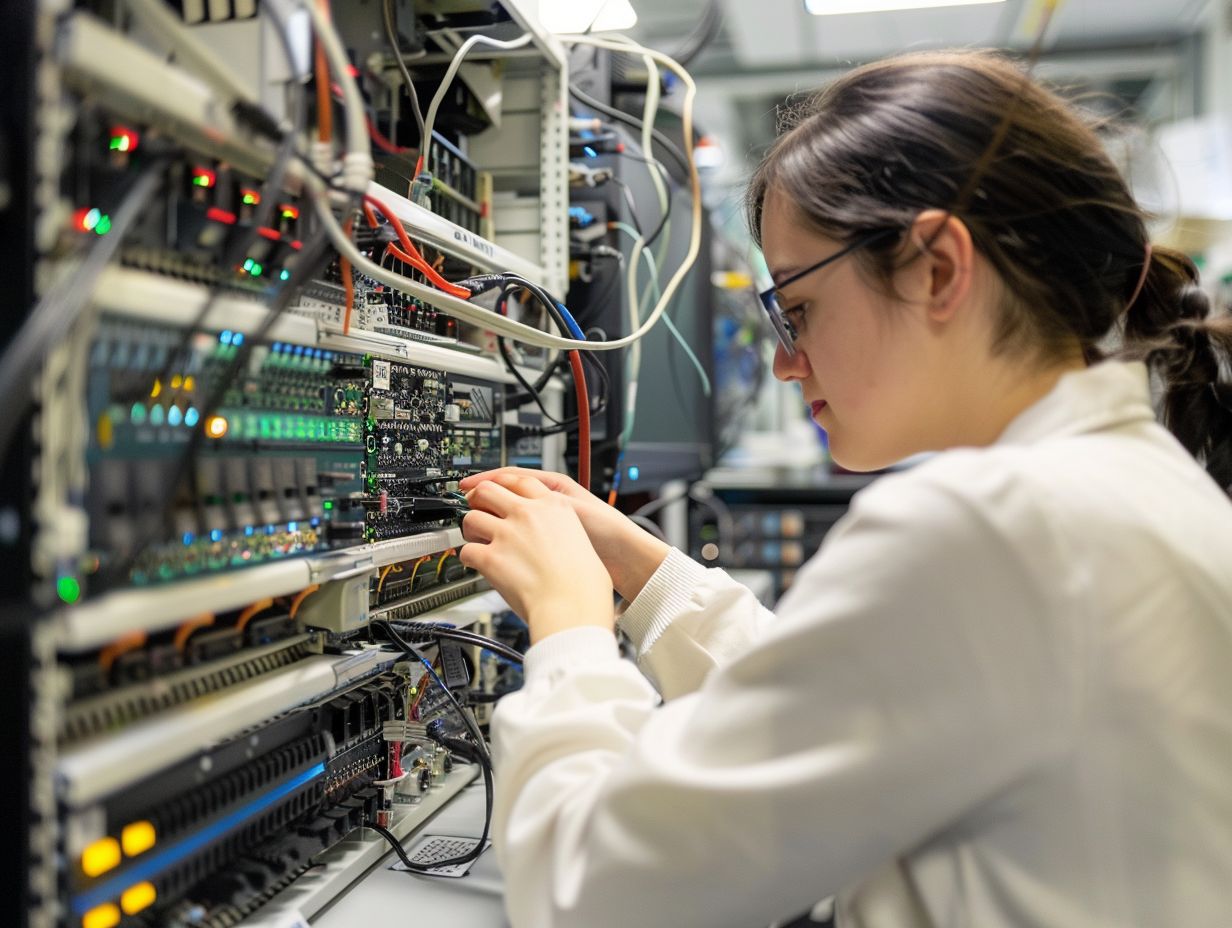If you are seeking to enhance your proficiency in Cisco CCNP training, establishing a network lab is crucial for gaining hands-on experience and practical knowledge. This article delves into the necessary components for setting up a network lab, provides step-by-step instructions, discusses the use of virtual labs, troubleshooting common problems, and offers tips for optimizing your training. Keep reading to learn how you can elevate your learning and productivity throughout your CCNP journey.
Key Takeaways:

Why a Network Lab is Important for CCNP Training
Setting up a network lab is essential for your CCNP training on the Cisco Learning Network. It offers a hands-on experience and practical knowledge that are vital for mastering the concepts and skills needed for CCNP certification.
Engaging in hands-on activities within a network lab setting allows you, as an individual pursuing CCNP certification, to simulate real-world scenarios and troubleshoot network issues firsthand. By working directly with networking equipment in a controlled environment, you can develop a deeper understanding of Cisco technologies and protocols. The advantages of utilizing a network lab for CCNP training include the opportunity to practice configuring routers, switches, and firewalls, refine problem-solving skills, improve troubleshooting abilities, and become acquainted with various network topologies.
Components of a Network Lab
In a network lab, you will find essential hardware devices such as routers, switches, and firewalls, complemented by software tools including simulation software and operating systems. These components collaborate to establish a simulated networking environment tailored for practical training purposes.
Hardware and Software Requirements
When setting up a network lab effectively, you must have specific hardware such as routers, switches, and servers, along with necessary software requirements like operating systems, virtualization software, and network simulation tools.
These hardware components act as the foundation of the network lab, providing the essential infrastructure for hands-on practice and experimentation. Additionally, the software prerequisites are vital for creating a virtual environment that replicates real-world networking scenarios.
It is advisable to include tools like Packet Tracer, Wireshark, and network monitoring software to enrich the learning process. Ensuring compatibility between hardware and software is crucial to avoid any issues that could compromise the functionality of the network lab setup.
By carefully choosing and integrating the appropriate combination of hardware and software components, individuals aspiring to become network professionals can acquire valuable practical skills and knowledge within a simulated networking environment.
Setting Up the Network Lab

Setting up a network lab entails meticulously configuring hardware components, installing essential software, and adjusting network settings to establish a practical and authentic training environment.
Step-by-Step Guide
- Begin by gathering the essential hardware components, such as routers, switches, cables, and computers. It is crucial to ensure that all devices are compatible and in good working order.
- Next, install the necessary software on each device. This includes operating systems, network management tools, and security applications.
- Proceed to configure network settings by assigning IP addresses, subnet masks, and default gateways to establish connections between devices.
- Finally, test the network by pinging devices, checking connectivity, and verifying data transfer. This will help guarantee seamless operation and proper functionality of the network lab.
Using Virtual Labs for CCNP Training
Virtual labs offer you a flexible and scalable solution for CCNP training by providing virtualized network environments that simulate real-world scenarios. Setting up virtual labs can enhance your learning experience and offer added convenience for you as a learner.
Benefits and How to Set Up
When setting up a virtual lab for CCNP training, you can take advantage of several benefits offered by virtual labs, such as cost-effectiveness, scalability, remote access, and the ability to simulate complex network scenarios. To begin, select a suitable platform that aligns with your training objectives. Next, install the required software that will facilitate the virtual lab environment. Following this, configure virtual networks in accordance with the specific requirements of the CCNP training program.
Utilizing virtual labs for CCNP training can result in significant cost savings compared to traditional physical labs. Physical labs often entail expenses related to costly hardware, maintenance, and physical space, which can be eliminated through the use of virtual labs. Moreover, virtual labs offer scalability, allowing for easy expansion and customization of network environments. With the added benefit of remote access, learners can connect to virtual labs from any location, fostering flexible study schedules and collaboration opportunities.
The process of setting up a virtual lab for CCNP training involves tasks such as creating virtual machine instances, configuring networking protocols, and deploying virtual switches and routers. By following these steps, you can establish a functional virtual lab environment that supports the practical aspects of CCNP training effectively.
Troubleshooting and Maintaining the Network Lab

Efficient troubleshooting and consistent maintenance are essential components of network lab management for CCNP training. Recognizing and addressing common issues promptly guarantees uninterrupted learning and hands-on experience.
Common Issues and Solutions
Common issues you may encounter in a network lab include connectivity problems, misconfigurations, and software conflicts. The solutions to these issues involve checking network settings, verifying configurations, and updating software to ensure smooth operation throughout your CCNP training.
One challenge you might face in network labs is dealing with duplicate IP addresses, which can cause conflicts and disrupt communication between devices. To address this issue, you can utilize tools like IP scanners to identify conflicting addresses and reconfigure them accordingly.
Another typical issue is insufficient security measures, leaving the network exposed to cyber threats. Enhancing the network’s security posture can be achieved by implementing robust firewall rules and encryption protocols. These proactive security measures are crucial in maintaining a reliable and secure network environment for effective CCNP training.
Tips for Effective CCNP Training in a Network Lab
To maximize learning and efficiency in a network lab for CCNP training, strategic planning, time management, and consistent practice are essential. By adhering to these guidelines, you can enhance your learning experience and effectively achieve your certification goals.
Maximizing Learning and Efficiency
To maximize your learning and efficiency in CCNP training within a network lab, it is important to focus on setting clear goals, practicing regularly, seeking feedback, and staying updated with industry trends. Effective time management and dedication are key factors in achieving success.
When you set specific, measurable goals, you can easily track your progress and maintain motivation throughout the training process. Engaging in consistent hands-on practice sessions not only reinforces theoretical concepts but also enhances your practical skills. Incorporating feedback from mentors and peers is valuable in identifying areas for improvement and refining your knowledge base. Keeping up to date with the latest developments in networking technologies ensures that your training remains relevant and aligned with industry demands. Continuous learning and adapting to new challenges are essential for optimal outcomes in CCNP training.
Frequently Asked Questions

What is a network lab and why is it important for Cisco CCNP training?
A network lab is a physical or virtual environment where you can practice and simulate real-world network scenarios. It is crucial for Cisco CCNP training as it allows hands-on experience and practical application of concepts learned in theory.
How do I go about building a network lab for Cisco CCNP training?
Building a network lab for Cisco CCNP training involves setting up the necessary hardware and software components, such as routers, switches, and virtual machines, and configuring them according to the training objectives. You can also use online platforms, such as Cisco’s VIRL or GNS3, to build a virtual lab environment.
What are the essential components required for a network lab for Cisco CCNP training?
The essential components for a network lab for Cisco CCNP training include routers, switches, cables, a computer or server, and virtualization software. You may also need additional equipment, such as firewalls or access points, depending on the training objectives.
Can I build a network lab for Cisco CCNP training without purchasing expensive equipment?
Yes, you can build a network lab for Cisco CCNP training without breaking the bank. You can use virtualization software, such as Cisco’s VIRL or GNS3, to simulate the hardware components needed for the training. This allows for a cost-effective and flexible alternative to physical equipment.
How can I maximize the effectiveness of my network lab for Cisco CCNP training?
To maximize the effectiveness of your network lab, it is essential to have a clear training plan and objectives in mind. Make sure to set up the lab environment to replicate real-world scenarios and regularly practice troubleshooting and configuring different network topologies.
Are there any online resources or tutorials available to help me build a network lab for Cisco CCNP training?
Yes, there are many online resources and tutorials available to guide you in building a network lab for Cisco CCNP training. You can also join online communities and forums to seek advice and share knowledge with other Cisco CCNP trainees and professionals.
